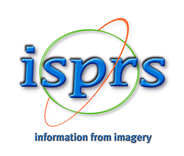|
ISPRS Workshop on Up-Dating Geo-Spatial Databases with Imagery and the 5th ISPRS Workshop on DMGISs held in Urumqi, China 28-29 August 2007 80th Birthday Celebrations for Dr Sherman Wu
The Opening Session of the Workshop was Chair by Dr Jiang Jia, from National Geomatics Center of China and Chair ISPRS WG IV/1. Welcoming speeches were given by: Professor Ian Dowman, President ISPRS; Mr Song Choa Zhi, Vice-President of State Bureau of Surveying and Mapping, who described major developments in mapping in China which involves the large task of updating 1:50,000 maps, and hoped for increased cooperation with ISPRS; a representation from Science and Technology in Xinjiang Province; and Mr Li Quanzhan, from the Bureau of Surveying and Mapping in Xinjiang Province, who described infrastructure developments in region and the importance of up-to-date geospatial data for this task, since Xinjianq is important for communication between east and west. The Keynote Technical session included presentations by Professor Zhang (China) on recent developments of Digital Photogrammetry Grid (DP Grid) from the original VirtuoZo. It was named DPGrid in 2006 since it involves parallel processing and operates over the network, involving multi base photogrammetry. Woodsford (UK) spoke on Spatial Database Update and Validation. Data base updating is the norm for many organisations. Data quality refers to whether the data is fit for the application, in terms of content and logical consistency. Storage and updating should be done once, while there should be multiple applications of the data. He spoke of stages in development of updating procedures, to the present day approaches, which involve multi-tier architectures. He gave examples of rules-based updating. Heipke (Germany) spoke on updating and refinement of geospatial data from imagery in Germany. Road sections at junctions are extracted using snakes. Semi-automatic extraction of roads and areas leads to a 70% improvement in time. Evaluation of these approaches was based on several methods. Dowman (UK) spoke of new technologies for updating databases for emergencies; portals - GEONETCast, being developed by GEOSS; data extraction from Google Earth and Pictometry for which accuracies of 1-2m are possible; and display standards for emergencies. Gold (UK) described dynamic cartography, and models of space including Voronoi tessellation; objects versus fields; modelling required for updating involving adding and subtracting features for dynamic GIS. The afternoon technical session was devoted to the celebration of the 80th birthday of Dr Sherman Wu (USA). Konecny (Germany) spoke on Sherman Wu's achievements, he was known as 'Mr Mars', the original mapping of the planet Mars and the technology background to these developments, including the then analytical plotters, and recent developments in the Mars Explorer project in Germany. Sherman Wu spoke of his new developments in real-time photogrammetry (RTPMS) for output of orthophotos and contours in near real-time without GCPs. Tests on various data sets required 3minutes processing per model with satisfactory accuracy. It is based on a 4kx4k frame camera and GPS/INS system that processes data on-board. He is currently acquiring a patent. This represented the next generation of developments in photogrammetry. Gruen (Switzerland) spoke of extracting information from high resolution satellite data. He gave examples of extraction of data from the Japanese ALOS Prism sensor, which has reduced quality images because they are digitised in 8 bits. Tests on various images using ETH software resulted in near sub-pixel accuracy using 1 ground control point. Images from ALOS Prism can result in accuracies of about 2m. Residuals remain due to the design of the sensor. Planimetric accuracies are of the order of 1 pixel, while height accuracies were better than expected. Li Deren (China) spoke on several developments in Wuhan, including the Vision Cruiser, GeoGlobe (similar to Google Earth) with measurable images, which has been designed specifically for China, requirements for LBS and the Mobile Mapping System developed in Wuhan. Trinder (Australia) spoke on sustainable development and new approaches to defining sustainability indicators. He then described example of how sustainability indicators can be determined by remote sensing. Lawrence Fritz (USA) described achievements of Dr Sherman Wu in further detail, and Dr Wu's generosity in supporting The ISPRS Foundation, including a donation in 2004 at the Istanbul Congress and a further donation during this workshop for a young author at the Beijing Congress. A full day of two parallel sessions on 29 August featured many papers on the topics covered by the Workshop. The proceedings of the Workshop were produced on DVD and can be obtained through the Chair of ISPRS WG IV/1, Dr Jiang Jia (see ISPRS.org for address details), and should be available in the future on the ISPRS web site. In the evening of 28 August a party was held to celebrate Sherman Wu's 80th birthday which included the cutting of large birthday cake, exchanging of many gifts and congratulatory speeches. By John Trinder, First Vice President, ISPRS
|
||
|
|
